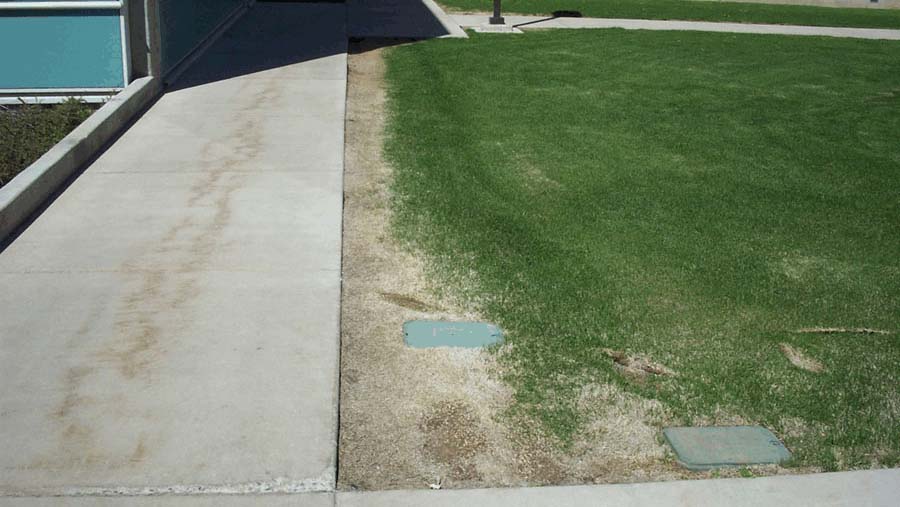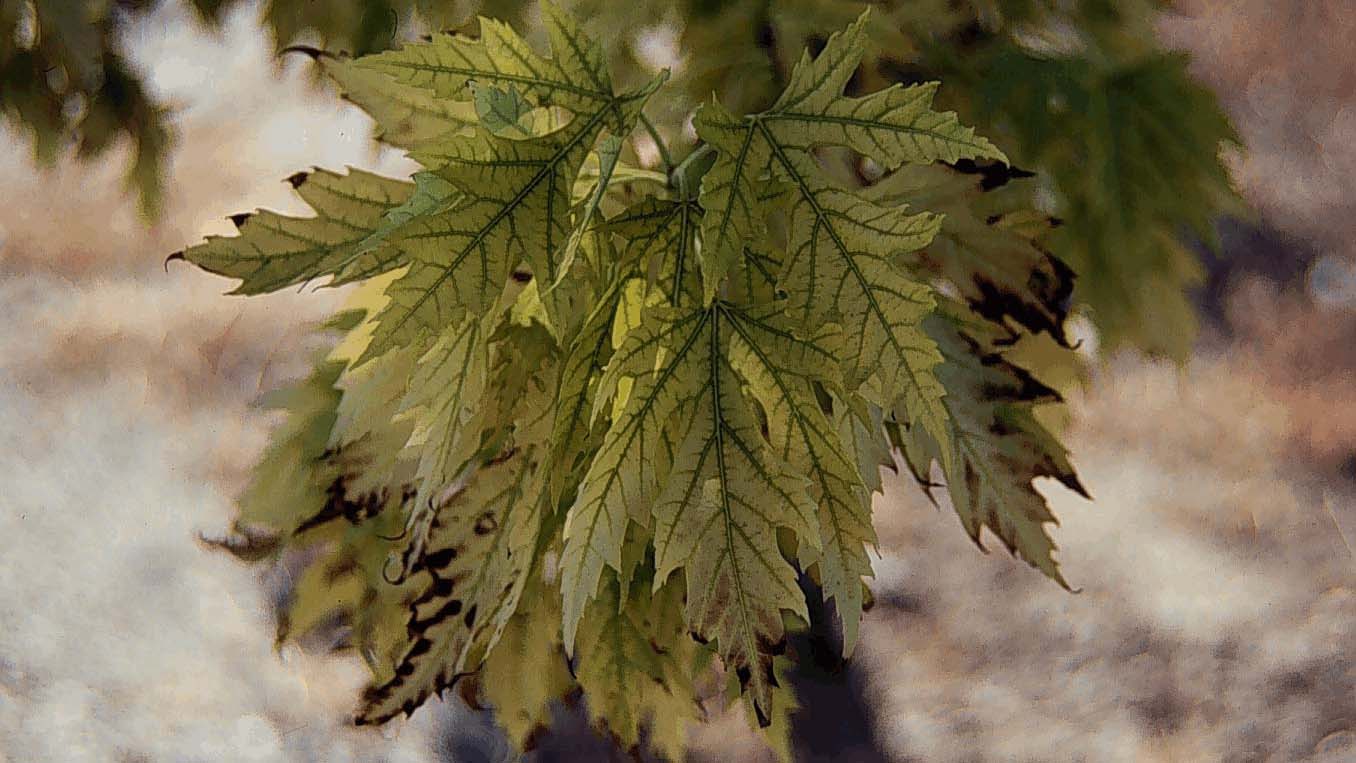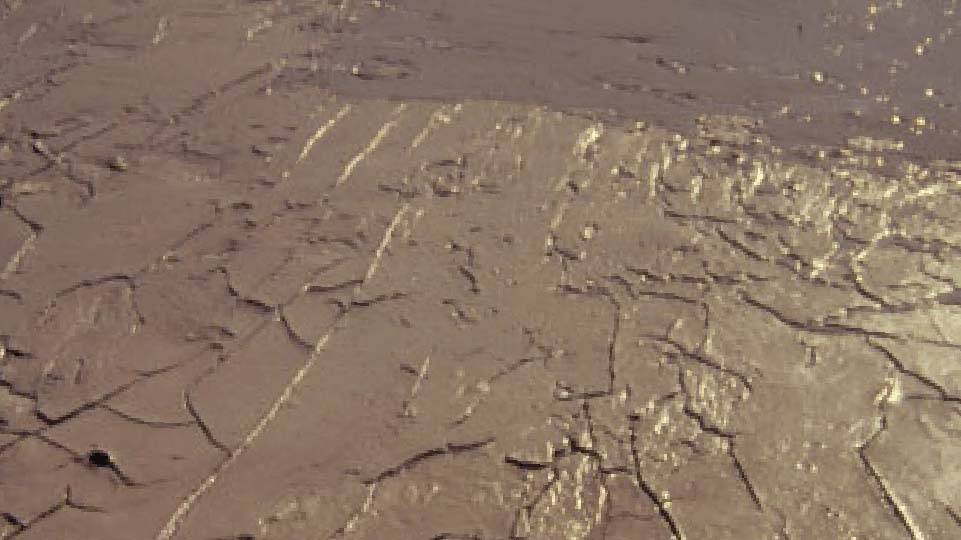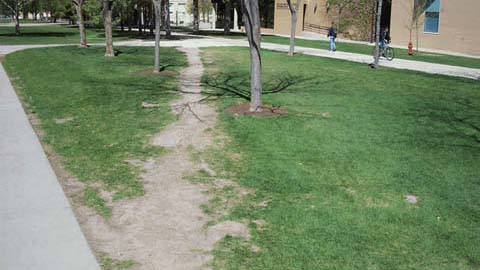Solutions to Soil Problems I. High Salinity (soluble salts)

Salinity is a measure of the total amount of soluble salts in soil. As soluble salt levels increase, it becomes more difficult for plants to extract water from soil. Some plants are more resistant than other’s, but as the salt levels exceed their ability to extract water, they become water stressed. This is known as chemical drought, since affected plants show visual symptoms similar to those plants suffering from a lack of water.
Saline (high salt) soils are common throughout Utah due in part to the arid climate and inadequate rainfall necessary to leach salts out of the plant root zone. Higher salt concentrations can be created by poor soil drainage, improper irrigation (short increments, often), irrigation water with high levels of salts (house water run through a water softener), when excessive amounts of fertilizer, manure or compost are applied, or when de-icing salts used on sidewalks and roads run off and enter the soil.
Measuring Soil Salinity
A commercial testing laboratory can measure soil salinity for a few dollars per sample. Contact a local county Extension office for information on collecting soil samples and sending them to a laboratory for analysis. It is not possible to measure soil salinity with home test kits. Since soil salinity is a common problem throughout Utah, it is important to have soils tested before making large and expensive landscape plantings.
Soil salinity is expressed as the electrical conductivity of solution extracted from the soil at water saturation. Salinity values are given in units of millimhos per centimeter (mmhos/cm) or decisiemens per meter (dS/m). Soil salinity values below 1 dS/m are normal in Utah. Salinity values above 2 dS/m begin to cause problems with salt sensitive plants, and values above 4 dS/m are problems for many garden and landscape plants.
Living with Saline Soils
Plants vary widely in their salinity tolerance. One method of addressing a soil salinity problem is to select and plant salt-tolerant vegetation in saline soil areas. Table 1 lists common garden and landscape plants and their tolerance to soil salinity.
|
Low tolerance |
Medium tolerance |
High tolerance |
|||
|
Beans |
Peas |
Broccoli |
Spinach |
Asparagus |
Beets |
Reclaiming Saline Soils
Soluble salts can be leached (washed) from the soil if there is adequate drainage and a clean source of irrigation water available. Drainage is essential for reclaiming saline soils since water must move through the soil, (rather than run off the surface), to leach salts below the plant root zone. If the soil is poorly drained because of compaction, a restrictive layer such as a plow pan, poor structure, or fine (silt or clay) texture, first till the soil and add an amendment like organic matter to improve drainage. A subsurface (tile) drain may also be necessary in high clay soils or in areas with a high water table.
Once drainage has been established, apply clean irrigation water to the site to leach salts. A rule of thumb for leaching salts is to apply 6 inches of water to reduce salinity levels by 50%, 12 inches to reduce salinity levels by 80%, and 24 inches to reduce salinity levels by 90%. Based on the initial soil test, estimate the amount of water necessary to reduce salinity to desirable levels for the plants to be grown. The total amount of water necessary should be applied over a period of several days.
Sprinklers can be used to leach salts as long as the system is cycled on and off to minimize runoff. Flood irrigation is also effective if the area is level, and a berm or basin can be created to contain the water.
Published December 2010
Utah State University Extension
Peer-reviewed fact sheet
Download PDF
Authors
Vernon Parent, Washington County Extension Agent and Rich Koenig, Extension Soil Specialist
Related Research






